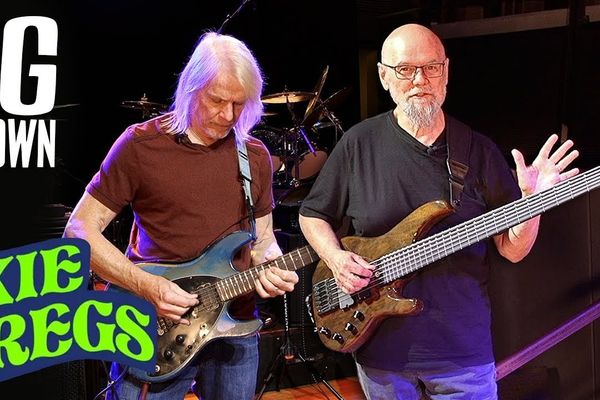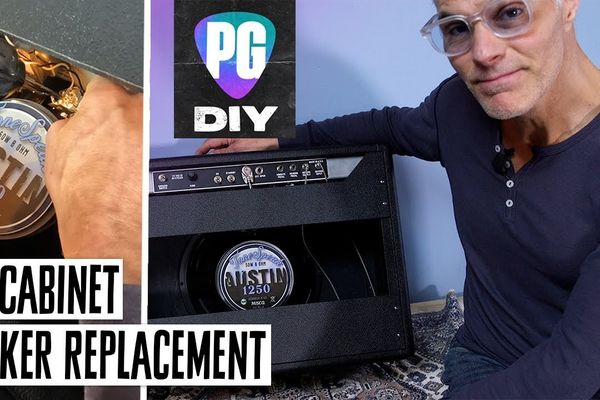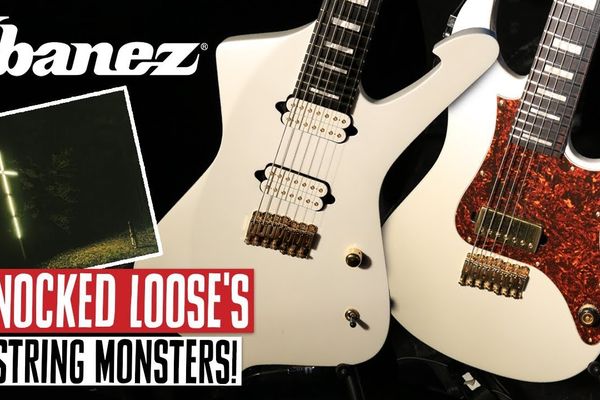In both a literal and metaphysical sense, John Suhr is a hard man to pin down. Not only was it difficult for him to find enough time to chat
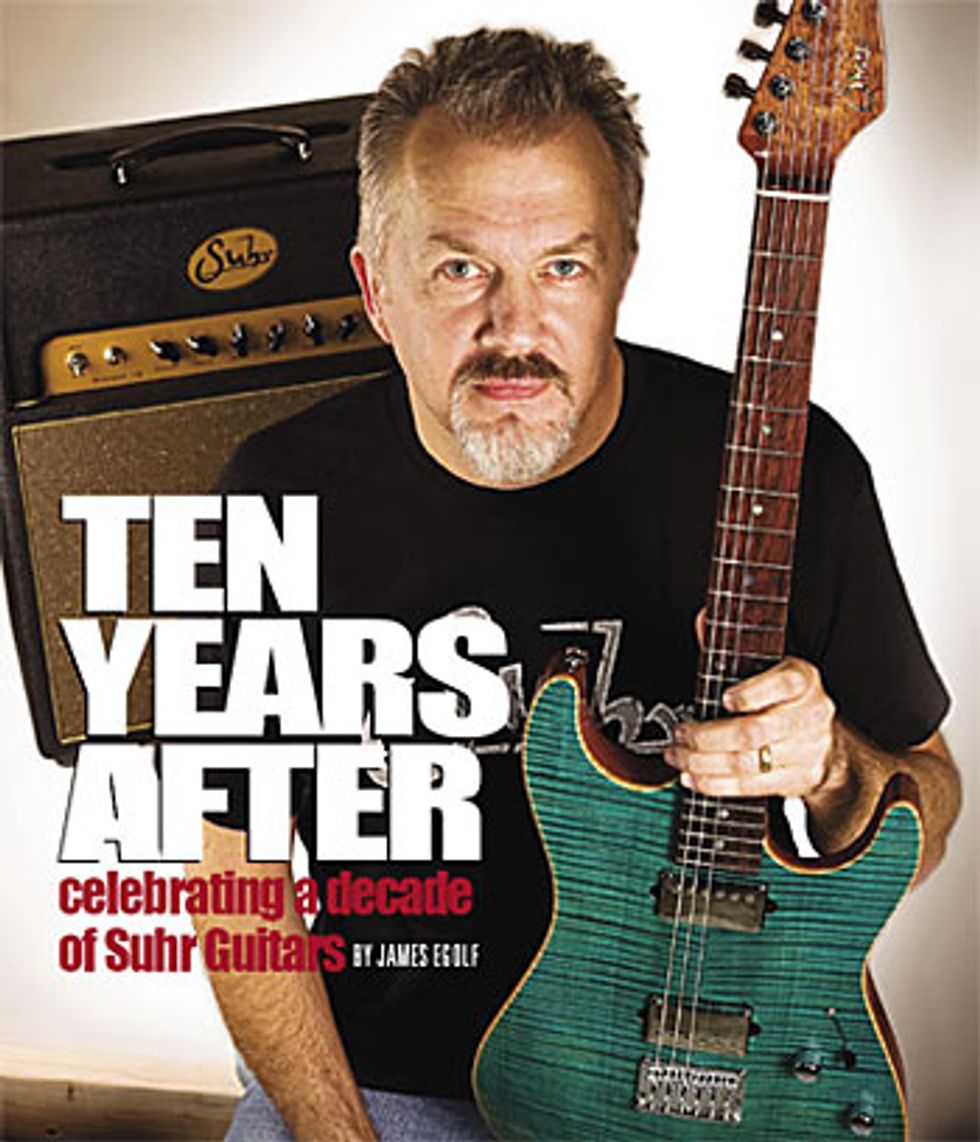 In both a literal and metaphysical sense, John Suhr is a hard man to pin down. Not only was it difficult for him to find enough time to chat with us, but it has also been tough to categorize his position within the industry. Is he a master guitar builder or an amp guru? Apparently the two aren’t mutually exclusive because his latest endeavor, Suhr Guitars, has melded both passions successfully enough to celebrate its 10th anniversary.
In both a literal and metaphysical sense, John Suhr is a hard man to pin down. Not only was it difficult for him to find enough time to chat with us, but it has also been tough to categorize his position within the industry. Is he a master guitar builder or an amp guru? Apparently the two aren’t mutually exclusive because his latest endeavor, Suhr Guitars, has melded both passions successfully enough to celebrate its 10th anniversary.Despite the traditional looking designs from the company he and Steve Smith founded, John rails against the concepts of soul and mojo that tend to permeate guitar making. To John, the “mojo” that a particularly nice ’56 Strat exudes is quantifiable, and therefore repeatable. By embracing modern building methods and a little bit of science, his instruments have that consistent feel, ensuring that each plays and sounds as good as the next. Ironically, this approach gives each guitar with the Suhr logo on the headstock tons of what most players immediately identify as great feel and soul – more commonly referred to as mojo.
As further proof of John’s singular vision, he left a successful gig building the high-profile Pensa-Suhr instruments at Rudy’s Music Stop to design and build preamps and amps with Bob Bradshaw, a move many would be reticent to make. Typical of John’s idiosyncratic take on doing things was the way he came to learn about amps – rather than apprentice with some dusty, old amp guru, John studied electronics and poured over iconic designs until the sounds he wanted to hear were coming out of the speaker.
John’s embrace of technology, combined with his DIY ethos, places him in a league of his own. Throughout this interview we were struck by how often he felt the need to improve upon designs and working situations that most would find more than satisfactory. Luckily, that drive has lead to the design of the Badger amp and his adoption of the SSC noiseless single coil system. That same drive and constant critical thinking also makes his instruments and amps among the finest available, ensuring that Mr. Suhr will continue to be a force to be reckoned with for many decades to come.
John was gracious enough to chat with us about the past, present and future of Suhr Guitars.
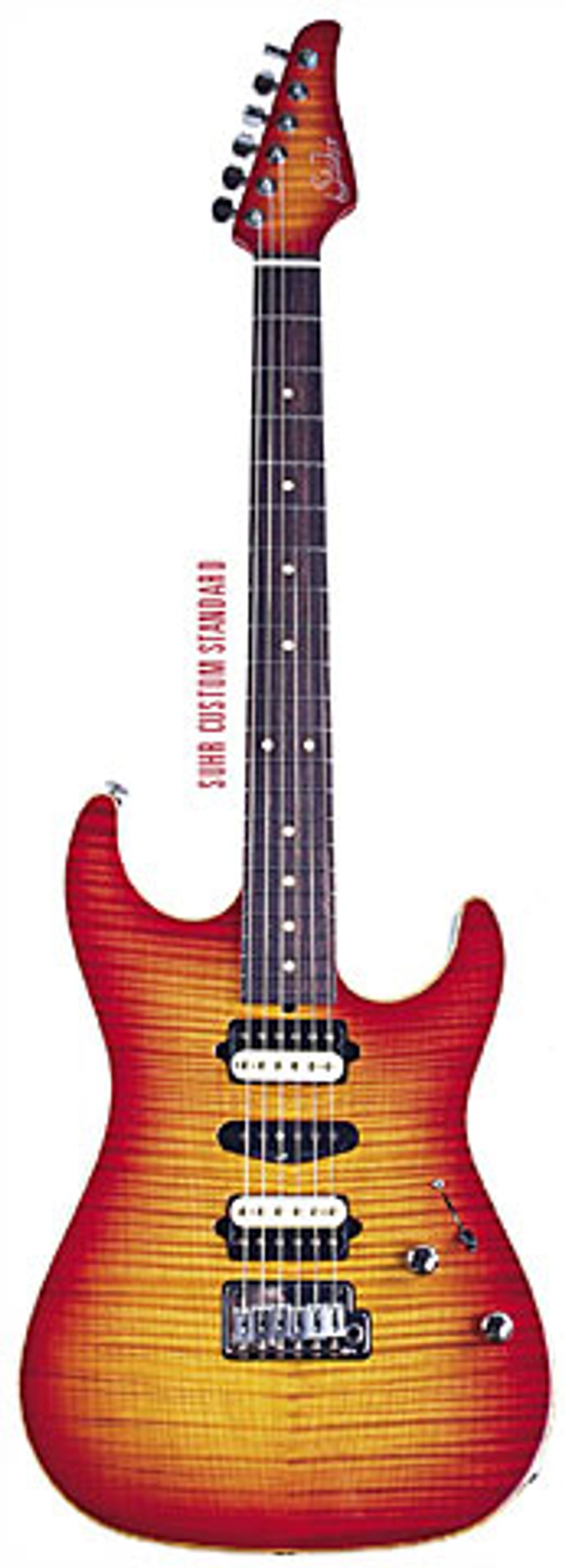 When you were first starting out 35 years ago in New Jersey, what were your original designs like? Were you a big Leo Fender fan?
When you were first starting out 35 years ago in New Jersey, what were your original designs like? Were you a big Leo Fender fan? Well, this is all kind of a flashback for me; I’ve forgotten about a lot of that period. But I can’t really answer that without a little history. I played in a band that was heavily influenced by bands like Mountain, The Who and early ZZ Top. At that time, I thought Fender guitars were too hard to play and too thin sounding. I did actually own a ‘54 Strat back then, but I only used it for Hendrix and Trower-type tones – I was more of a Les Paul/Les Paul Junior person. I thought notes choked out too easily on Strats and they were too easy to knock out of tune. At that time in 1973, I was just starting to tinker with guitars, rather than build anything. I built later out of the frustration of not being able to find instruments I liked – I could see the flaws everywhere.
I had Bob Benedetto [founder of Benedetto Guitars] make a new neck for one of my Strats – which looked nothing like a Fender – to overcome some of my complaints. In the process we both learned some important things about tremolo systems. Bob also gave me a busted up Les Paul Junior he found in the trash. I turned that Junior into this beast that I gigged with all the time, and ended up modifying all my guitars very heavily from then on out. As much as I wanted to apprentice with Bob, he told me, “If you want to do this for real, just learn it on your own.” I still talk to Bob and credit him with giving me the inspiration to take instruments into my own hands. The basic answer is that the first guitars I made were more in the LP Junior vein.
How did you land the gig at Rudy’s Music Stop? A lot of heavyweights walked through that place.
Playing in bands was not a great way to make a living when I moved to New York City, so I picked up jobs as a cook while still playing in the New Jersey club scene. One of the guys I worked with at a restaurant had heard that I knew a lot about building and repairs – he also knew I was getting tired of slinging omelets. He had moved onto a sales position at Rudy’s Music Stop, and when he saw a need for a repair guy, he convinced Rudy to talk to me.
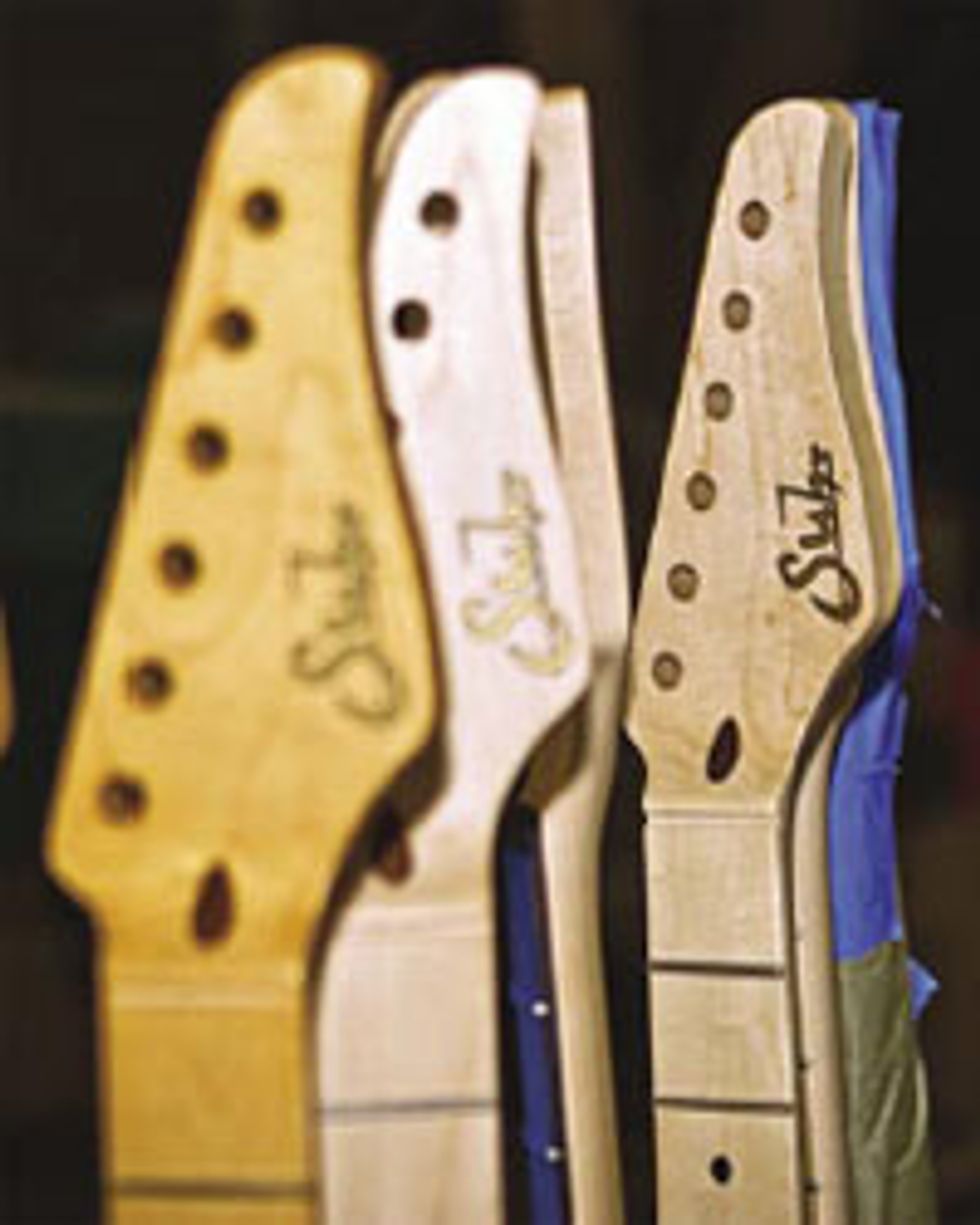 At that time there was no repair shop there, let alone much room for one. My first “shop” was a small bench in the boiler room. Rudy was a Schecter parts dealer, and it didn’t take long for me to start building what became hundreds of instruments and doing so many repairs that we had to expand from the boiler room to over two floors of the building. This is the period when I was able to begin dialing in what I did and didn’t like about Fender guitars.
At that time there was no repair shop there, let alone much room for one. My first “shop” was a small bench in the boiler room. Rudy was a Schecter parts dealer, and it didn’t take long for me to start building what became hundreds of instruments and doing so many repairs that we had to expand from the boiler room to over two floors of the building. This is the period when I was able to begin dialing in what I did and didn’t like about Fender guitars. Did you get to meet Lou Reed and Eric Clapton? Mark Knopfler?
Mark and Lou were customers who I wound up doing a lot of work for, as well as guys like Reb Beach, Steve Stevens, Victor Bailey, Peter Frampton, G.E. Smith and many of the local studio players. I didn’t get to meet Eric until years later when I built amplifiers for him at Fender. The Pensa-Suhr Eric owned was a gift from Knopfler. I wish I could have had a personal interaction with him, but fortunately I was able to spend a lot of time with both Knopfler and Reed.
When you left that gig to design amplifiers with Robert Bradshaw in 1991, which was ultimately very successful, weren’t you worried about walking away from a successful gig – the bird-in-the-hand thing?
Well, yes, I was sort of worried, but Bob had already presold 100 or so of the 3+ preamps before I decided to move. I was always an employee at Rudy’s, and to be honest, the money wasn’t enough to really take care of my plans for a life with my new wife.
I designed all of the circuits and the preamp while I was playing in my band at my bandmate’s studio in NYC. I was constantly searching for tones I didn’t hear in amps I purchased but was hearing in my head. My then wife-to-be was stuck in Columbia for two years sorting out immigration issues, so I needed something to keep myself occupied. Taking what I had learned earlier, working at Time Electronics in Union, New Jersey and pushing myself to get the tones in my head in a three-channel preamp kept me very busy.
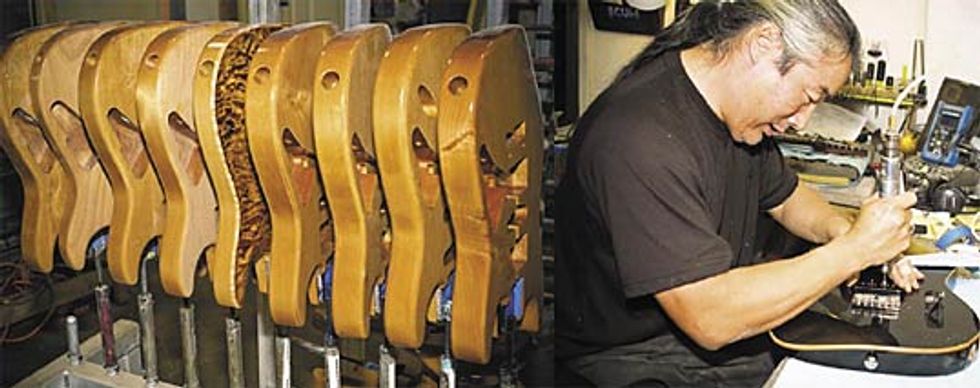
|
In 1995 you landed a gig as Senior Master Builder at Fender’s Custom Shop; did you appreciate the situation while you were there?
I have no regrets about my time at Fender – I learned things the way they were done there, but it really wasn’t what I expected. I was hired as a Senior Master Builder and was there more to contribute rather than learn. I learned how a factory approaches production, but I chose to approach it differently.
What precipitated you leaving Fender?
I left because I wanted more control over the product, so I could hold my head up high. I pushed for new machinery (CNCs) and the red tape was killing me. I was frustrated and felt that my skills would be better utilized in design and engineering – more so than sitting there, leveling frets and building guitars. I enjoy solving problems and being involved in research; I don’t like mojo. To me, there is a reason for everything.
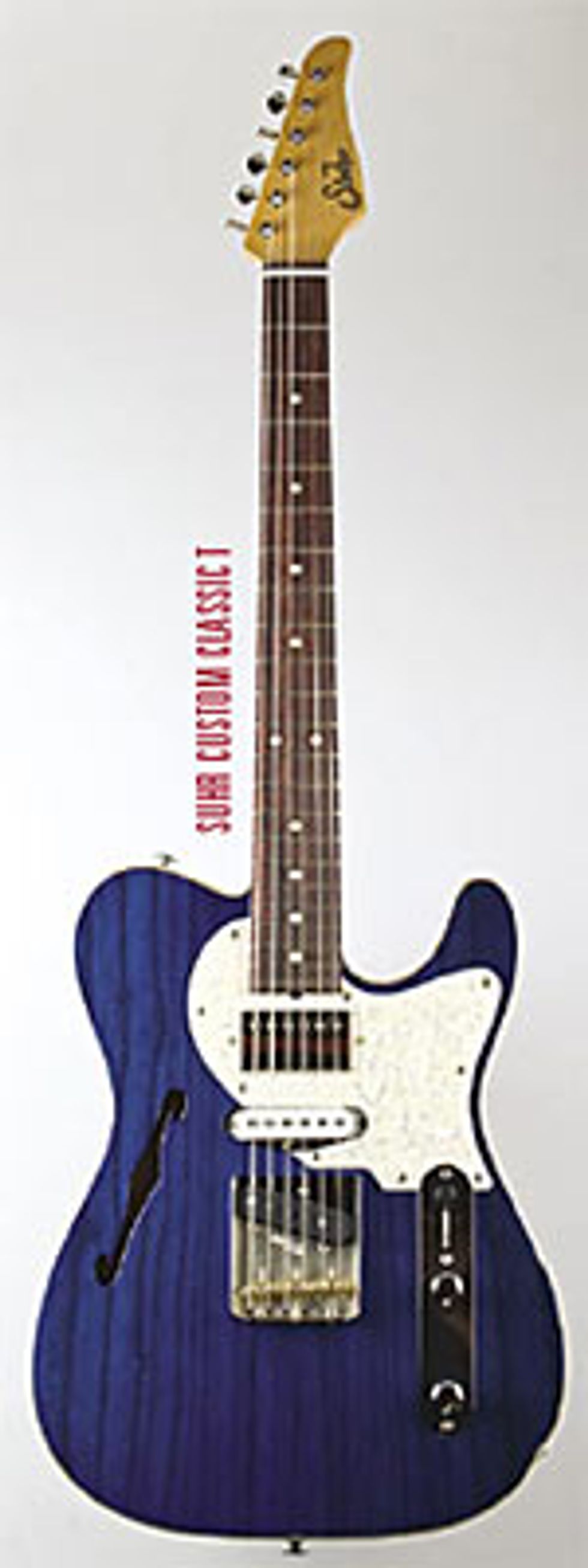 You and Steve Smith founded JST in 1997. How integral was Steve to starting your own shop? How did you guys meet?
You and Steve Smith founded JST in 1997. How integral was Steve to starting your own shop? How did you guys meet? Steve was a software rep and a CNC programmer. He saw my frustration while at Fender and asked me why I didn’t just start my own company. My response was that I hadn’t learned about the programming end of it, and of course the money! I was also feeling a bit reserved since I now had a family to think about, with my wife and young son. Steve had done some programming work with Rickenbacker, but wasn’t a guitar builder; fortunately, all I had to do was get my CAD chops together and Steve could cut whatever I threw his way. We gathered a group of investors – mostly family, some friends and even Peter Frampton. Ten years later things are growing and better than ever. It took six to eight years to realize it, but I definitely made the right decision.
With Steve’s CNC experience and your building skills, you now have complete control of the manufacturing process. What has that been like?
The amount of personal effort, sacrifice and time that one must put into a successful guitar business is not for the faint of heart. I was sanding bodies, fretting necks and painting into the early hours of the morning until just a few years ago. I was the lone paint boy until very recently; now I finally have someone who has been able to free me up a little. My wife and I used to wind all the pickups at home. It has been hard to find just the right crew.
How do you feel the Plek machine [a computer-controlled alternative to manual fret dressing] has changed things from a manufacturer’s standpoint?
You don’t need a Plek to do excellent fret work, but it does take the guess work and theorizing out of the equation. It’s sort of like surgery without X-ray, compared to a full body scan before the operation. Each piece of wood will behave differently, but the Plek makes them all set up with the same consistency.
As production increases, are you able to retain the same control as before?
I have way more control now. I’m still a small builder, but I have a hand-picked, top notch crew who do things my way with my supervision. I’m much more in control now than when I had to be one of the crew. This allows us more resources to make a better product and take advantage of new technologies.
For instance, I now have the ability to actually measure the frequency response of a body and neck before they go together. With that information, I can hear and see the frequency response of the instrument as a whole – I can start putting an end to myth and use science to make sense out of what we hear. You need to have room for R&D in order to come up with new products and explore new ideas.
Have you had any issues sourcing good wood?
Wood is always an issue. We use old, slow growth maple for our necks. We’ve never had an issue with plain grain maple and have been using the same source since the beginning, but we are constantly looking for sources of body woods. Currently, we bring in a lift of alder and send at least half of it back, mainly for being too heavy. We re-dry all of our wood, even though the moisture content is good when we get it.
What prompted the standard bass model in 2003? Did you offer basses on a custom order option before that?
I’ve made many basses before, even back to the Pensa-Suhr days with Victor Bailey, and at Fender I made some custom, oneoff basses for Wayman Tisdale. We didn’t start them at Suhr until 2003 and next year we will expand our bass line beyond our current traditionally shaped models. In fact, we will have some new bass products at NAMM.
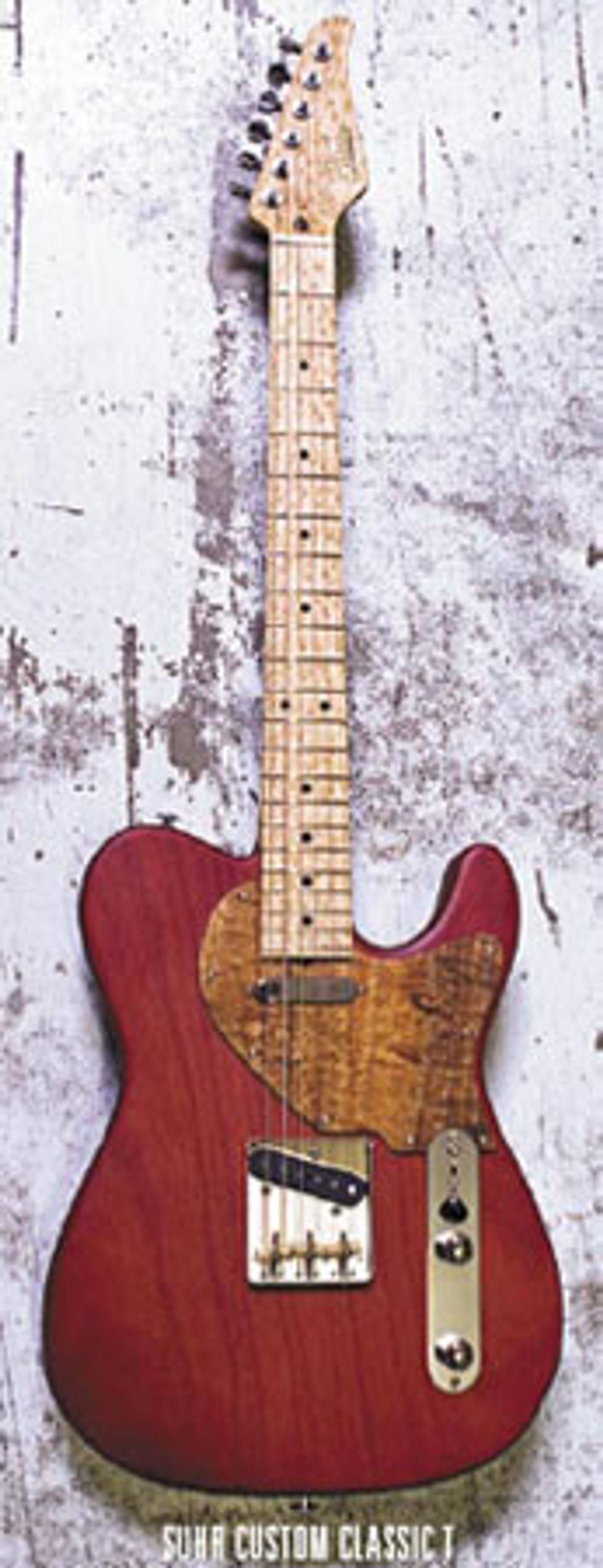 Can you walk us through the SSC pickup system and tell us a bit about how it works?
Can you walk us through the SSC pickup system and tell us a bit about how it works? The SSC now has an official patent. I am not the inventor – Ilitch Electronics is the inventor. I was, however, one of the only people to believe that Ilitch was onto something. Together we tweaked the idea to work with Suhr guitars. I later asked them to integrate it into the backplate of a trem-equipped guitar so we could sell it as an aftermarket part.
It creates the same hum as the single coils create, without the negative effects of a simple dummy coil. It works more like an antenna with virtually no inductance or DC resistance to rob your tone. There are no active electronics either. It is the most uncompromised solution for maintaining your single coil tone I’ve seen. When I first saw it, I kicked myself in the head and said, “Why didn’t I think of that?” It really works and 99 percent of the pro players I have installed it for hear no difference or such a little difference it takes them half a day to hear it. All the glory and air of the single coil pickup is still there – only the hum is missing.
It seems that you’ve come full circle with the release of the Badger amp last year. How does it feel to be back in the amp game?
Amazing, but I never really left. The great thing is that we are still a small company. I make decisions and have the control. If I need to spend some money on great test gear and tools to make better product, I just do it. I don’t have red tape – I am the red tape.
I’m so excited about the new amps that we are working on. I have some new guys in our electronics crew who will enable our amps to achieve a whole new level of features. In 2008, we will be developing some amps that have me truly excited about making amps again. Some builders feel it’s all been done before – what’s left? What’s left is that the builders need to listen to musicians’ needs and put things into an uncompromising package that works in every situation. So, with that in mind, it hasn’t all been done before.
What do you enjoy about the business? What gets you up in the morning?
My enjoyment comes from building a great playing, great sounding guitar – a tool where a musician can find comfort. The biggest compliment I get is when someone like Steve Stevens says, “I took the guitar straight from the shop to the studio – no need to tweak or change anything.” The only reason I drifted into building guitars and amplifiers was because I was a frustrated player who spent more time tweaking my instruments and amps than I did on my playing. I found a niche of course, but I don’t feel musicians should have to worry about all of the complaints I had when I was making a living playing music. I don’t regret it at all, but the obsession with making better instruments didn’t leave enough room for playing.
To this day, I still eat, sleep and breathe with the desire to make better instruments and amplifiers. An artist can make an art guitar, but a real, working instrument is so much more than the sum of its parts.
Suhr Guitar
suhrguitars.com
